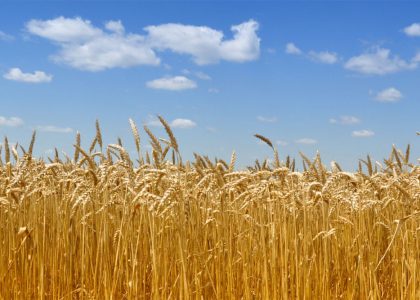The 2013 United States’ corn crop started off with predictions of being the largest ever. This was primarily due to the USDA acreage report issued on June 28th that showed 97.4 million acres planted for corn. This was the highest acreage allotted to corn since 1936 and also marked the fifth consecutive year of acreage gains for corn. This caused December corn futures (this year’s crop) to fall 9% in the next few trading sessions. Even though the market is now trading even lower than it was then, I think there are signs pointing to a bottom in this market. End line users should take advantage of the lowest prices we’ve seen in over a year.
Record planted acreage along with trend line yields would produce the largest corn crop in history. However, the University of Illinois pointed out as recently as last week that the USDA’s planting intentions report of June 28th won’t materialize the way the market initially reacted. The Fighting Illini pointed towards the prevented plantings number to support their argument that corn acreage may be more than 8 million acres less than originally forecasted. This is primarily due to the lateness of this year’s plantings. Furthermore, they comment on the currently declining characteristics of the corn crop condition, which may impact yields if pollination doesn’t get the weather it needs.
We often talk about a market’s, “fear premium.” Fear premium is the market participants’ disproportional concern of the market moving one direction instead of the other. Fear premium in the grain markets is always on the high side. Call options, which make money when the market goes up are always more expensive than put options in the grain markets. The difference between the current market price and the price of a put and a call option equally distant from the current price is 0 in an unbiased market. However, call options currently have a built in fear premium of approximately 30%. Therefore, the markets’ participants are 30% more concerned about prices moving higher by $.50 per bushel than the market falling by another $.50 per bushel.
End line users of corn have been stocking up on futures contracts with abandon. This is another good way of determining the underlying value of a market. The Commodity Futures Trading Commission issues it Commitment of Traders Report every week. The report tracks the market’s largest traders and categorizes them according their type of trading. Primarily, we look at three groups of traders – speculators, index funds and finally, commercial traders. We focus on the commercial trader category. It is our belief that those who produce the good and those who sell the good have the best understanding of a market’s value. Farmers, as a collective, ought to know what a fair price is for the corn they’re growing just as cereal producers or, cattle feeders should know what a fair price to pay is. End line commercial traders have built up a record position on the market’s decline. Clearly, they are willing to lock in as much of their future input needs as they’re bank accounts and storage facilities will afford them.
End line users of corn understand that even if we do end up with record acreage and good yields, we’ll still barely budge the global ending stocks number. The world currently stands at about 70 day’s worth of grain supplies. This is not just corn but an index tracked by AgriMoney that includes rice and wheat. The point of the chart published by AgriMoney is that peak production relative consumption has shifted to a deficit trend over the last 20 years. It has dwindled from 130 day’s supply in the mid 1980’s to our current level of 70 days. All things considered, this year’s US harvest could add about four days to the world’s supplies. This is hardly a drop in the bucket.
There’s no question that corn prices have been declining since the June 28th USDA acreage report and the next major report isn’t due out until August 12th. This leaves the market with time to trade its way through pollination and the trend to continue lower. However, the record net short position in managed money cannot continue to profit from corn’s decline for much longer. The market can only trade so low relative to its fundamental value. Commercial traders clearly see this market entering their value area. We’ll side with them and be on the lookout for a reversal in prices. Most importantly, we’re approaching prices that leave no more room for bearish surprises, therefore, the path of least resistance will soon turn higher.
This blog is published by Andy Waldock. Andy Waldock is a trader, analyst, broker and asset manager. Therefore, Andy Waldock may have positions for himself, his family, or, his clients in any market discussed. The blog is meant for educational purposes and to develop a dialogue among those with an interest in the commodity markets. The commodity markets employ a high degree of leverage and may not be suitable for all investors. There is substantial risk of loss in investing in futures.





